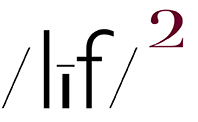(embiggenable)
(embiggenable)
(embiggenable)
A CONSIDERABLE PART OF PART OF the philosophy of modern pictures project is attempting to get an overview handle on what’s going on in the picture making world.
FYI, I have, for my purposes, divided that world into 2 categories; the snapshots and art worlds. However, to be more precise, the art world is split into 2 categories; decorative art and fine art. And, just to further define things, I have divided the fine art world into 2 sub-categories; the minor leagues and the major leagues.
In keeping with my previous post, wherein I wrote about my target audience, aka: me, of all of the above described picture making categories, the one I am most interesting in addressing in the PoMP project is the fine art / minor leagues category. That’s cuz that’s the category in which I toil, picture making wise. And, I believe that it is that category which holds a significant number of picture makers who are striving to make fine art but who will not make it to the major leagues.
So, in order to for my project to have value for that constituency, I believe that, having toiled in the minor leagues-with considerable success-for a significant part of my picture making life, passing on my experiences therein should be of interest to those working in the same picture making world.
All of that written, and returning to my opening remark, re: attempting to get an overview handle on what’s going on in the picture making world, I came across an item that might be of interest, what’s going on wise, to my blog followers. A collection of approximately 750 pictures which, by the slant of the site on which they are presented, are a fair representation of what’s going on in the minor leagues. And, FYI, if a picture catches your eye, there is usually a link to the picture maker’s site where more of their work can be viewed.
